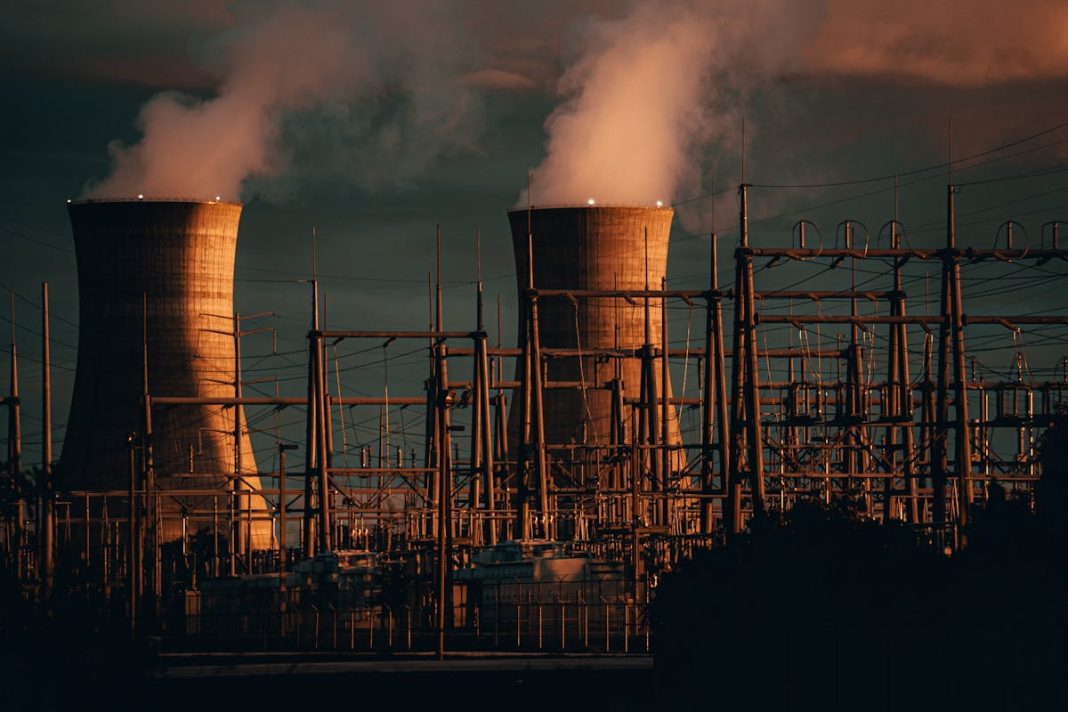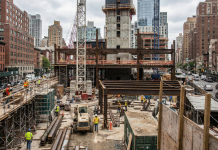In today’s construction news, read about how Westinghouse Electric Company and Google Cloud announced that they will work together to use artificial intelligence (AI) tools to improve the operations of current nuclear power plants using data-driven insights and turn the construction of advanced Westinghouse nuclear reactors into an effective, repeatable process. Meanwhile, due to continuing construction at the intersection of U.S. Highway 40 and Downhill Drive in Steamboat Springs, drivers should plan ahead and be aware of the following changes. On the other hand, the Tennessee Valley Authority (TVA), a federally controlled utility, has submitted a building permit application to the US Nuclear Regulatory Commission (NRC) for consideration to construct one of the country’s first small modular reactors (SMR). Finally, from Sunday evenings (8 p.m.) until Friday afternoons (noon), construction will limit the highway to one lane in each direction between State Route 207 and Elks Point Road.
Westinghouse to Use Google Cloud AI to Speed Up US Nuclear Reactor Construction
Original Source: Westinghouse to Accelerate US Nuclear Reactor Construction and Enhance Operations with Google Cloud AI
Westinghouse Electric Company and Google Cloud announced a partnership to use artificial intelligence (AI) tools to streamline the construction of advanced Westinghouse nuclear reactors and improve nuclear power plant operations using data-driven insights.
The two firms will combine Westinghouse’s HiVE™ and Bertha™ nuclear AI solutions with Google Cloud’s expertise to simplify new nuclear plant construction. Data-driven AI insights will improve the nuclear fleet.
Westinghouse Interim CEO Dan Sumner remarked, “Our AP1000® technology is the fastest way to add new sources of affordable and abundant nuclear energy to the U.S. grid.” It is the only fully licensed, construction-ready modular reactor. By partnering with Google Cloud to improve our HiVE and Bertha technology and using 75 years of proprietary nuclear data, we can accelerate the deployment of new AP1000 units and implement powerful AI technologies to optimize nuclear power plant construction and operations.
“This partnership with Westinghouse combines Google Cloud’s AI technologies and expertise with Westinghouse’s century-long nuclear innovation expertise to chart a new path towards a smarter and safer future,” said Kyle Jessen, Google Cloud’s Managing Director, Commercial Industries. “Artificial intelligence is more than a tool—it can give companies a competitive edge. Westinghouse shows what’s possible.”
Westinghouse and Google Cloud achieved a first-of-its-kind proof of concept using Westinghouse’s WNEXUS digital plant design platform and HiVE artificial intelligence enhanced by Google Cloud technologies like Vertex AI, Gemini, and BigQuery to autonomously generate and optimize AP1000 modular construction work packages.
Westinghouse launched HiVE and Bertha in September 2024, using 75 years of proprietary data, knowledge, and expertise. Our nuclear-specific AI solutions, supported by nuclear engineers, optimize new nuclear deployment of AP1000, AP300™, and eVinci® reactors. Westinghouse’s AI technologies can help power plants provide reliable and affordable electricity to households and businesses.
Construction on the Intersection of U.S. 40 and Downhill Drive is Updated Every Week
Original Source: Weekly update for U.S. 40 and Downhill Drive intersection construction
Motorists should plan for the following construction modifications at U.S. Highway 40 and Downhill Drive in Steamboat Springs.
The southeast intersection corner will be worked on for two weeks. Here, crews will form and pour curb, gutter, and sidewalk concrete.
The north side of US 40 will also see rock wall, waterline, and roadway prep for two weeks.
The roadway reconstruction closure on Downhill Drive continues. Businesses on Downhill Drive stay open. NAPA’s temporary driveway on US 40 leads to Alpenglow, Colorado Sled Rentals, and NAPA.
US 40 leads to Yampa Valley Tire Pros and El Charro. Other companies on Downhill Drive can be reached via Radiator Road and a southbound turn into Downhill Drive, where flaggers will guide traffic into the work zone.
During the project, US 40, Riverside Drive, and Downhill Drive will be single-lane, alternating traffic in both directions.
Traffic will be slowed to 30 mph in the work zone. Twelve-foot width and 90-foot length limits apply. Business and resident access will be maintained during construction, with occasional closures.
Downhill Drive will be closed during grading and repair. The transit stop at Riverside Drive and westbound Downhill Drive will be moved during construction. SteamboatSprings.net has route change information.
First US SMR for Clinch River as Regulator Reviews Construction Permit Application
Original Source: Clinch River Set For First US SMR As Regulator Dockets Construction Permit Application For Review
Tennessee Valley Authority (TVA) applied for a construction permit from the US Nuclear Regulatory Commission (NRC) to develop one of the nation’s first compact modular reactors.
TVA is the first US utility to apply to develop GE Vernova Hitachi’s (GVH) BWRX-300 design, which could lead to other utilities adopting the technology.
TVA applied to the NRC in late May to develop the advanced nuclear reactor at Clinch River near Oak Ridge, Tennessee.
The US Department of Energy helped the utility obtain the nation’s sole early SMR site permit and pass the environmental evaluation procedure.
The reactor design must undergo a complete safety examination before construction.
TVA president and CEO Don Moul remarked, “This is an exciting step to bringing the nation’s first utility-led SMR online.
As the first utility in the US to have a BWRX-300 reactor construction permit application under evaluation by the Nuclear Regulatory Commission, this will pave the way for other utilities to install the reactor, guaranteeing energy security and reliable electricity for all.
Only the BWRX-300 boiling water SMR is being developed in the US.
Existing Supply Chains
TVA said the 300 MW advanced light-water system, a smaller, simplified version of GVH’s licensed Economic Simplified Boiling Water Reactor, will use known supply chains to hasten implementation.
TVA, GVH, OPG, and Synthos Green Energy are working together to design the BWRX-300.
In May, Ontario and OPG agreed to a CAD 20.9 billion (€13 billion, $15.2 billion) proposal to build the first of four BWRX-300 SMRs at OPG’s Darlington plant, with commercial operation projected by 2029.
SMRs are rare and only completed in Russia and China. The developed Group of Seven countries will implement Darlington first.
Early site preparation at Darlington, near a nuclear station with four large-scale reactors, is complete.
TVA thinks Clinch River site preparation could begin next year as the NRC considers its construction permit application.
Starting This Week, U.S. 50 Construction Will Delay Tahoe Travelers
Original Source: Heads Up, Tahoe Travelers: U.S. 50 Construction Will Bring Delays Starting This Week
Give yourself more time on the journey to Lake Tahoe. U.S. 50 will undergo substantial repaving from July 13 to July 25 by the Nevada Department of Transportation (NDOT).
From 8 p.m. Sunday to noon Friday, construction will reduce the highway to one lane in each direction between State Route 207 and Elks Point Road. All lanes reopen on weekends. Work zone speeds will drop to 35 mph, causing moderate delays.
The project began in April and paused for the Fourth of July and the American Century Championship to resurface over 13 miles of old roads between Spooner Summit and the Nevada/California border. To increase safety, crews will replace three inches of old pavement with new asphalt, rebuild guardrails, and put in rumble strips.
As excavation continues, side streets and driveways may close, but businesses and homes will remain open. Access will be restored with steel plates and earthwork.
This highway, which sees 26,000 cars daily, hasn’t been resurfaced since 2007. The upgrades aim to increase drive safety, efficiency, and smoothness.
Summary of today’s construction news
In summary, as part of this partnership, Westinghouse and Google Cloud have successfully completed a first-of-a-kind proof of concept that uses Google Cloud technologies, such as Vertex AI, Gemini, and BigQuery, to enhance HiVE artificial intelligence and Westinghouse’s WNEXUS digital plant design platform to generate and optimize AP1000 modular construction work packages autonomously. The AI solutions from Westinghouse are prepared to assist power plant operations by facilitating the delivery of dependable and reasonably priced electricity to residences and commercial buildings.
Meanwhile, Downhill Drive will be completely closed while the project is being graded and rebuilt. During construction, the transit stop at Riverside Drive and westbound Downhill Drive will be moved.
On the other hand, at Darlington, on a location adjacent to an existing nuclear station with four large-scale nuclear reactors in operation, preliminary site preparation work has been finished. While the NRC considers the company’s application for a building permit, TVA expects that initial site preparation work at Clinch River may start as early as next year.
Finally, as excavation work progresses through the region, side streets and driveways may be temporarily closed, but residences and businesses will still be accessible. Where necessary, access will be restored using earthwork and steel plates. About 26,000 cars use this section of roadway every day, and it hasn’t received complete resurfacing since 2007. The enhancements are meant to make the drive more efficient, safer, and smoother.








